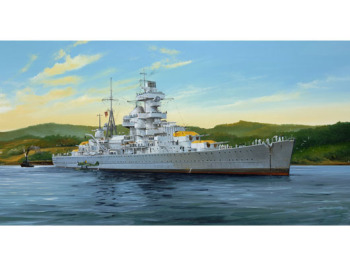
Then they didn't build any new battleships either.

I've never heard of any interwar British super cruiser projects before the treaty system fell apart, then they did some studies to model possible threats, the British went back to big cruiser studies for their own use during middle part of WW2 with both 8in and 9.2in guns, 1942 or 1943 as I recall, but the opinion then was a resounding no because just three of the 9.2in ships already cost as much as an additional pair of KGV class battleships. This clause seems to have been driven heavily by a hope that Germany would join the treaty system and stop with the raiders. This ensured any super cruiser would be extremely expensive. Nor could any capital ship laid down before have guns below 10in caliber. No capital ship of less then 17,500 tons standard displacement was allowed to be laid down before. The Second London Treaty in fact banned pocket battleships and super heavy cruisers outright in article 4. This is not really cheating the treaty system, rather it would be handing a large advantage to an enemy battlefleet if you actually believed the battleship was still valuable.
#Battlesheep pocket battleship full
Since the number and rate of replacement of battleships was restricted, not just the tonnage, building a new pocket battleship would require giving up a full scale battleship and signal a lot of warning to other powers it was happening.
#Battlesheep pocket battleship full size
Under Washington and the 1st London Treaty a pocket battleship was legal, but only if built in place of a full size battleship under the allowed replacement timeline rules. So them claiming to have a Super Cruiser that was around 12,000-15,000 tons, while actually 20,000, and 12" when actually 14". and planned to upgun said ships to 20" once the Americans tried to catch up with their own 18". Which kind of fit with Japanese thought at the time as the Yamato class was claimed to have 16" guns because the Japanese believed that the Americans would try and counter that, only for the 18" to be better. Either with a "Renegotiation" of previous treaties, or by spending time and effort to come up with a counter. This would be something that Japan would note, that such warships, despite seemingly weaker, would provoke Britain and others to try and stop them from building them. France later designed the Dunkerque Class to fight and sink the Deutschland Class. And while not worth it against anything but Heavy Cruisers, the Deutschland Class still concerned Britain and the US enough to try everything to get Germany to give them up, Germany wanted in on the terms of the WNT (which the US and Britain had little issue with), which meant that the naval issues from Versailles would die, but France did not want to give that up so it was scuttled. Bad trade IMO.Ĭlick to shrink.It was still laid down, which is something of the point. I guess they can reinforce the Yamato screen, though I also guess that in order to built these ships, the Mogami class was not built instead. The latter is unlikely since they want a Decisive Battle and to sink war ships, neither of which is that likely to happen to a surface merchant raider. Their entire survival strategy when independent raiding would have been to avoid maritime patrol planes and carriers (not even escort carriers), and that presumes that the Japanese would use heavy surface warships to go after merchants. I don't envy their chances as surface raiders much past-mid 1942, since they'd be up against an opponent who had either too-strong battleships and some carriers (UK in the Indian Ocean) or fast carrier task forces with fast battleships (US, Pacific). They're too slow to operate with the carriers.

That alone should be an indication of how useful 20K wannabee-battleships were throught to be.Įssentially, with 26 knots maximum speed, they are either independent surface raiders or with the Nagato and Yamato class beefing up the battleships considered worth something. Nobody built pocket battleships of 20,000 tons, the Germans were treaty-limited below that (though cheating with the Deutschland class, but not that blatantly), and the Alaska, Dunkerque, Scharnhorst and all the cruiser-killer projects were between 2600 or thereabouts.


 0 kommentar(er)
0 kommentar(er)
